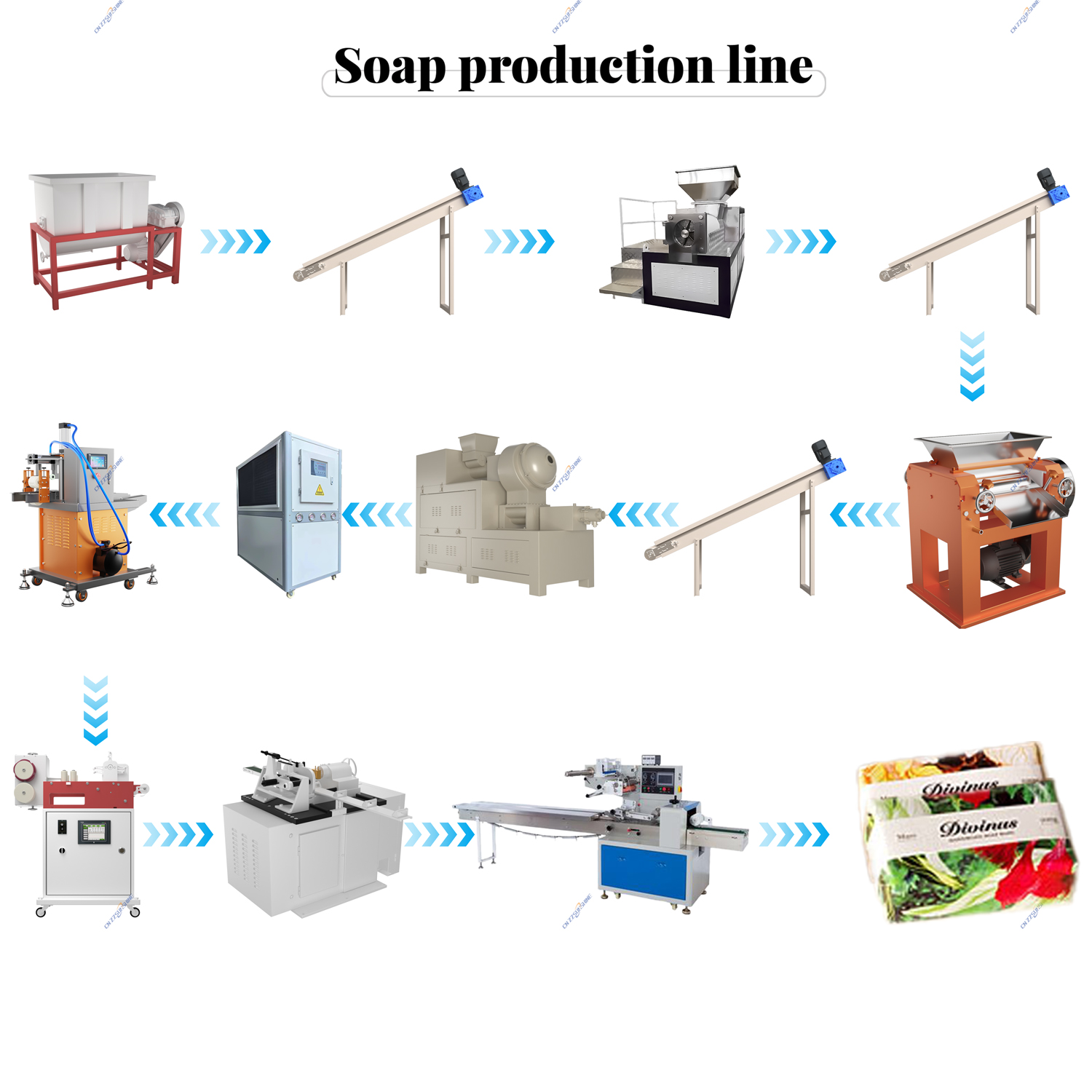Efficiently scaling bar soap production demands a purpose-built **soap making production line**. Moving beyond small batches requires integrating specialized machinery to handle mixing, refining, extrusion, cutting, and finishing – each step critical for consistent quality and output. Understanding the core components is key for manufacturers aiming to optimize their **laundry bar soap production line** or **toilet soap finishing line**.
The process typically begins with a robust **soap mixer**. This **industrial mixer for chemical processing** ensures homogeneous blending of fats, oils, alkali, additives, and recycled soap noodles. Uniform mixing is non-negotiable for achieving the desired saponification and final bar properties. Following mixing, the amalgamation enters the refining stage. Here, a **three roller mill for cosmetics** (often specified as an **OEM three roller grinding mill**) is frequently employed. This mill meticulously grinds and refines the soap, eliminating gritty particles and creating a smooth paste essential for premium **beauty soap making line** products or high-quality laundry bars.
The refined soap mass then proceeds to the heart of the line: the **soap plodder machine for bar soap**. A **vacuum plodder** is particularly crucial. It simultaneously compresses the soap under vacuum, removing entrapped air bubbles that can cause voids or cracking in the final bar, and extrudes a continuous, dense log. The quality of extrusion directly impacts the bar’s density, appearance, and lathering characteristics. Downstream, the solid log meets the **custom soap cutting machine**. Precision is paramount. Options range from simple guillotine **cutter** mechanisms to sophisticated **automatic block cutter machine** units or **electric washing soap cutter** systems, which slice the log into uniform individual billets with minimal waste.
Finally, the **toilet soap finishing line** or **laundry soap finishing line** takes over. This stage involves stamping, embossing, cooling, drying (sometimes requiring an **industrial chiller for machinery** for controlled cooling), and packaging. Integrating an **automatic packing machine for food**-grade standards ensures hygienic and efficient wrapping of the finished bars. Investing in a well-engineered **automatic soap production line**, incorporating a reliable **soap plodder**, efficient **mixing machine**, and precise cutter, translates to significant gains. Manufacturers achieve higher throughput, consistent bar quality (crucial for both **bath soap making machine** outputs and industrial laundry bars), reduced labor costs, and improved overall operational efficiency. Selecting machinery designed for the specific demands of soap, whether for a compact **beauty soap making line** or a large-scale **laundry soap making line**, is fundamental for competitive manufacturing.




